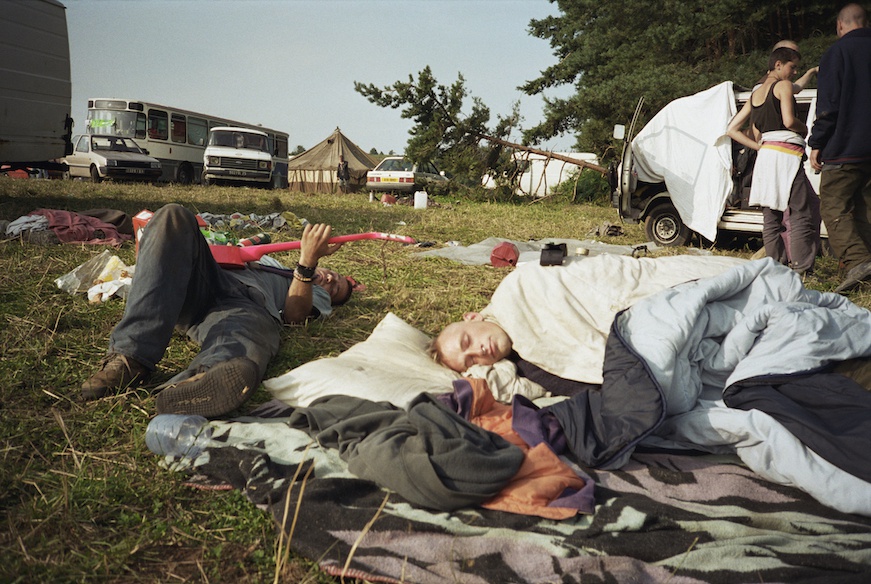09 August 2021 Raves and Riots brings together a collection of seminal diaristic photographs drawn from a period spanning 1990-2004, documenting the artist’s experiences as part of the free party and traveller community. Leaving home aged 17, Vinca Petersen moved to a London squat and quickly became immersed in the free party scene that exploded across Europe in the 1990s. She began taking photographs as a means of recording experiences of a subversive new way of living as part of a community of travellers and close friends.

Vinca Petersen, Pink Guitar, 1994
The free party wave enraptured Britain’s young generation following the explosion of rave, techno and ecstasy in 1989, when crowds of up to 25,000 gathered in countryside locations for illegal all-night parties. Whilst the movement was born of music and hedonism, it quickly became a vehicle for civil disobedience and defiance of authority, as portrayed in images of Petersen and her friends attending protests contesting the political backlash against their way of living. “To me, the same thing sometimes happens on a demonstration as in an illegal rave. They’re both slightly edgy gatherings…you get a sense of the normal world being suspended, and you experience these brief, totally free moments.” says Petersen.
The 1994 Criminal Justice Bill created a hostile environment for the squatters, travellers and rave organisers that made up the artist’s immediate social circle. In response, Petersen and those closest to her adopted a nomadic lifestyle, transporting powerful sound systems across Europe in truck convoys, setting up parties in countryside locations on the outskirts of urban areas. Petersen remained on the road until a few months before the birth of her son in 2005. Despite the movement’s iconic significance, photographic documentation of the rave scene is sparse, as the community was wary of outsiders taking pictures for fear of legal repercussions, so cameras were routinely confiscated at parties. Petersen’s photographs do not merely document a movement, but acquaint us with a cast of personalities and narratives that expose the precarious existence embraced by her community in order to preserve a distinctive sense of freedom and expression.
The selection of images in Raves and Riots transcend the euphoria of transitory moments that characterised the era, encompassing the ambition, relationships and struggles of an aspirational community fostering an existence beyond traditional systems of organisation, control and hierarchy.


